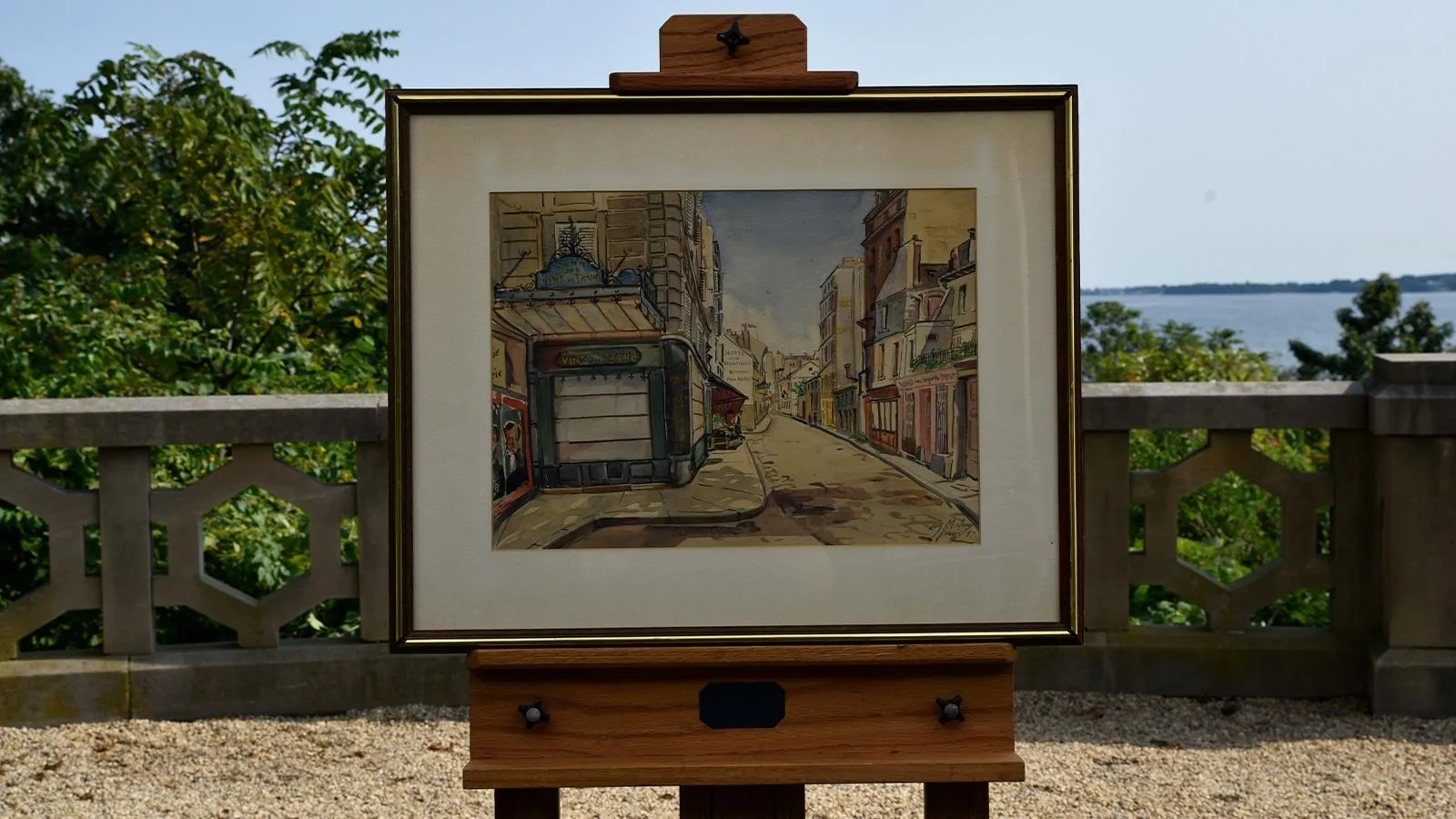GUEST: The clock belonged to my great-uncle. He had it near the front door in his house on Long Island. When we were children, my sister and I used to go visit and we used to look at the clock all the time, and we were fascinated by it. And I can remember sitting around and waiting for it to gong. When he passed, my dad got the job of cleaning out his place. As soon as I walked in, I saw the clock. No one wanted it, I just took it. That was, uh, 1995.
APPRAISER: Right.
GUEST: It's been sitting in my living room. My dad found the bill of sale, which was dated 1936. It says "Grandfather clock, Thomas Wildbahn, Reading, Pennsylvania." The price was $100.
APPRAISER: And what year was that?
GUEST: 1936.
APPRAISER: That was a lot of money. It's a beautiful Pennsylvania case. The case is made of walnut with this contrasting light wood inlay. This is about as expressive as a Pennsylvania Federal clock gets, with these sunbursts and all of this inlay. It's fantastic. It is definitely a, a Pennsylvania clock case, made in Berks County, uh, and Wildbahn worked there, but I don't agree with, uh, the attribution to him as the clock maker. The movement and dial, the works for the clock, didn't start out with this case.
GUEST: Mm-hmm.
APPRAISER: And the way that I can tell that is that the door has been altered to fit a larger face than what was originally in here. So you see the width of this door, it would have been a similar width across, all the way across the top. And you can see it's been cut down and reduced to a much smaller element there. Same down here. The miter joint comes up here. That would have gone straight across. That's been opened up to accommodate a larger dial than what was in there originally.
GUEST: Wow.
APPRAISER: And if we open the door, it's r..., it's really obvious in the dial mat. You can see the joint, and that board used to go straight across. So it's what we call a marriage. The case dates to about 1795 to 1800. But the dial and the movement post-date that by a number of years, probably about 1820, maybe even a little bit later. And I think the movement and dial were made in Scotland. And as a matter of fact, the pendulum bob that, that came with it, this is very typical of English and Scottish clocks from the 1820s or so.
GUEST: Wow.
APPRAISER: If this clock were sold at auction today, I think it would be bought by a collector who would change it back to what it was, and put a local Pennsylvania or Berks County movement in there. And at auction, it would probably sell in the vicinity of $6,000 to $7,000 today.
GUEST: It's good to know. (chuckles) Good to know.
APPRAISER: If it were not altered, if this were a signed Berks County movement in, in this case, maybe cleaned up a little bit, it would easily be a $25,000 or $30,000 clock, based on how expressive this case is. It's really fantastic.
GUEST: Nice.











